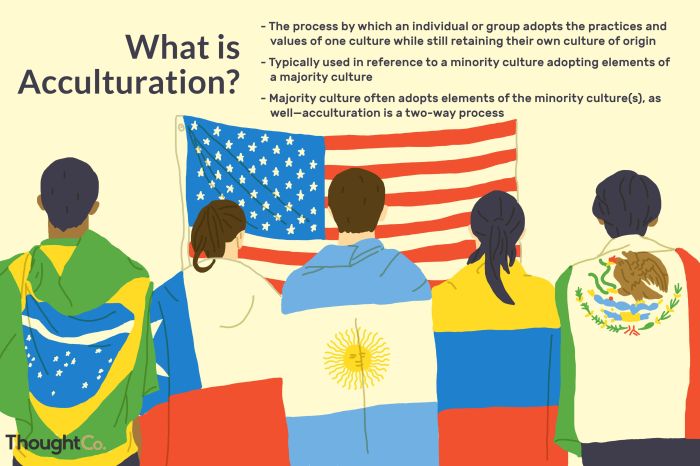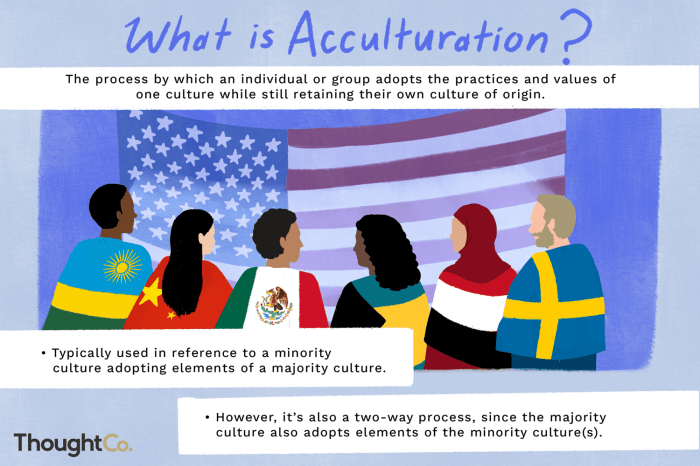The process of adapting borrowed cultural traits. – The process of adapting borrowed cultural traits is a captivating journey that unfolds as societies interact and exchange ideas, customs, and beliefs. This intricate process shapes the cultural fabric of societies, leaving an enduring legacy on their identities, norms, and values.
As foreign cultural traits are introduced, they undergo a series of transformative stages, influenced by factors such as cultural diffusion, assimilation, and modification. These stages play a crucial role in determining the successful integration of borrowed traits into the recipient culture.
Cultural Borrowing

Cultural borrowing is the process by which one culture adopts and integrates elements from another culture. It is a complex and dynamic process that has shaped societies throughout history, leading to cultural exchange, innovation, and transformation.
Factors that influence the adoption of foreign cultural traits include economic interdependence, political power dynamics, social contact, and technological advancements.
Stages of Adaptation
The process of adapting borrowed cultural traits involves several stages:
- Cultural Diffusion:The spread of cultural traits from one society to another through various channels, such as trade, travel, and media.
- Assimilation:The process by which borrowed cultural traits become fully integrated into the receiving culture, losing their original identity and becoming indistinguishable from native traits.
- Modification:The process by which borrowed cultural traits are altered to fit the needs and values of the receiving culture.
Socio-cultural Impact
Cultural borrowing can have both positive and negative consequences on societies:
- Positive Impacts:
- Cultural enrichment and diversity
- Economic growth and innovation
- Increased tolerance and understanding
- Negative Impacts:
- Cultural homogenization and loss of identity
- Social conflict and tension
- Economic dependency
Case Studies
Specific cultural traits that have been borrowed and adapted by different societies include:
- Language:The adoption of foreign languages for communication, trade, and education.
- Religion:The spread of religious beliefs and practices from one culture to another.
- Food:The incorporation of foreign dishes and culinary techniques into local cuisine.
- Fashion:The adoption of clothing styles, accessories, and hairstyles from other cultures.
Ethical Considerations, The process of adapting borrowed cultural traits.
Cultural borrowing raises ethical considerations, including:
- Cultural Appropriation:The unauthorized and disrespectful use of cultural elements from another culture for commercial gain or personal benefit.
- Respect for Cultural Heritage:The importance of acknowledging and preserving the cultural heritage of both the borrowing and lending cultures.
Clarifying Questions: The Process Of Adapting Borrowed Cultural Traits.
What is the significance of cultural borrowing?
Cultural borrowing allows societies to acquire new ideas, technologies, and practices, fostering innovation and cultural growth.
What are the key stages involved in adapting borrowed cultural traits?
The stages include cultural diffusion, assimilation, and modification, each playing a unique role in shaping the integration of foreign traits.
How does cultural borrowing impact social norms?
Cultural borrowing can challenge existing social norms, leading to both positive changes and potential conflicts.

